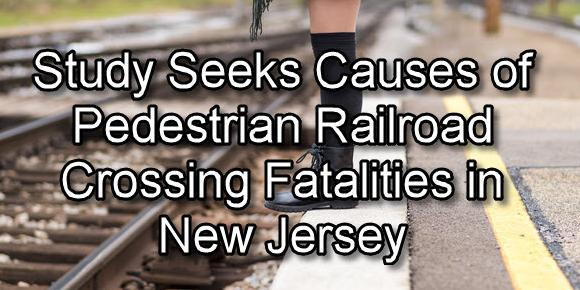
Study Seeks Causes of Pedestrian Railroad Crossing Fatalities in New Jersey
- posted: Jul. 30, 2021
- Pedestrian Accidents

More than 20 pedestrians have been killed every year since 2015 at NJ Transit railroad crossings, and the transit agency is partnering with Rutgers University to deploy artificial intelligence to help reduce the problem.
A nine-month data collection effort by NJ Transit and the Rutgers Center for Advanced Infrastructure and Transportation is aimed at better understanding the frequency, demographics and causes of pedestrian accidents at grade-level railroad crossings. A $357,000 grant awarded by the U.S. Dept. of Transportation in December is funding the study.
There are more than 1,500 grade-level railroad crossings in the state, with just over 300 of them belonging to NJ Transit. A federal report released in May listed the following as New Jersey’s 10 deadliest railroad crossings, using data going back to 1975:
- Cedar Avenue, Middlesex Borough — 11 crashes causing seven deaths
- Park Avenue, East Rutherford — 10 crashes causing six deaths
- Market Street, Elmwood Park — 9 crashes causing five deaths
- Prospect Avenue, Piscataway — 10 crashes causing four deaths
- Main Street, Ramsey — 7 crashes causing four deaths
- Lalor Street, Trenton — 5 crashes causing four deaths
- South Avenue, Middlesex Borough — 13 crashes causing three deaths
- Van Winkle Avenue, Garfield — 8 crashes causing three deaths
- Outwater Lane, Garfield — 7 crashes causing three deaths
- Passaic Street, Hackensack — 5 crashes causing three deaths
New Jersey isn’t the only state struggling to combat pedestrian accidents at rail crossings. Rail safety agencies around the country say they are puzzled by rising numbers of pedestrians hit at crossings in recent years. “I think we’ve worked out how to stop cars from getting hit [by trains]. We’re at a little bit of a loss at how to deal with pedestrians,” said Ian Savage, a rail safety expert at Northwestern University.
Unfortunately, there is little that train operators can do to protect pedestrians. Even if a pedestrian is spotted on the tracks, a train simply cannot stop in time. For example, a report by the Minnesota Safety Council states that the average freight train moving 55 miles per hour takes more than a mile to stop when the engineer applies the emergency brake. Similarly, an 8-car passenger train moving 80 miles an hour needs approximately a mile to stop.
Seigel Law is available to help families who have lost loved ones in train accidents. We can investigate the situation and if there was negligence on the part of the train or other party, we may be able to pursue compensation for you. Call our Ridgewood firm at 201-444-4000 or contact us online to schedule free consultation with one of our experienced attorneys.

